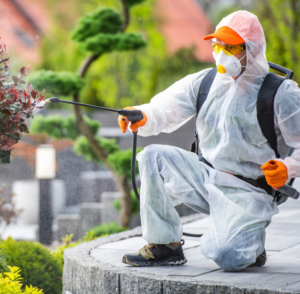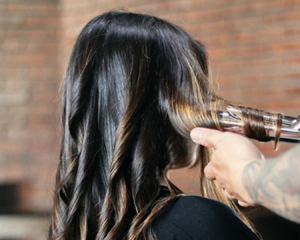Pest control is the action of controlling pests, such as insects and rodents. These unwanted organisms cause disease, deteriorate plants, and/or cause other inconveniences.
Pests can be continuous, requiring regular control; sporadic or migratory, requiring occasional control; or potential, occurring only under certain environmental conditions. Threshold levels have been established for many pests based on esthetic and health concerns. Click https://natureshieldpestsolutions.com/ to learn more.

Pest treatment is an important tool to eradicate a pest infestation, but it’s even more important to prevent pests from invading in the first place. It’s much harder to control a problem after it takes hold.
Prevention focuses on creating an environment less conducive to pests by addressing factors like food, water, and shelter. This approach usually involves a combination of tactics, including cultural, mechanical, and biological controls. It’s also often part of an integrated pest management plan (IPM) and may be used in conjunction with pesticides, which are typically more targeted to specific pests than broad-based pest control measures.
In agricultural settings, preventive practices may include adjusting planting times to coincide with a pest’s dormant period or selecting and using crop varieties that are naturally resistant to pests. In building and facility environments, pest prevention tactics might include regularly cleaning and sanitizing areas and removing items that attract pests like food scraps, standing water and clutter. It’s also important to make sure that facilities have adequate ventilation and that door sweeps and expansion joints are properly sealed.
Physical or mechanical pest control measures include traps, screens, barriers, fences and nets that physically block pests from accessing or entering a property. Devices that alter an environment can also be used to control pest populations, such as radiation and electricity. Chemicals that directly kill or affect the behavior of a pest are also used, but these types of agents should be selected carefully as they can have wider impacts on the environment and other pest populations.
In some cases, eradication of a pest is possible, but this is usually only in outdoor situations where it’s easier to control the situation. In general, eradication is a rare goal in pest control and is typically reserved for situations such as when a new invasive species threatens local biodiversity or human health and safety. It’s also very hard to achieve in enclosed spaces, such as hospitals and other buildings, where a few pests can quickly spread and cause extensive damage. Even then, eradication is typically limited to eliminating the most damaging pests while taking steps to prevent their reemergence.
Suppression
Pests can be a nuisance and cause damage to property. They can also spread disease. For example, rats can gnaw through wires and transmit diseases like hantavirus and leptospirosis. In addition, cockroaches can contaminate surfaces and food with dangerous bacteria. A professional can use a variety of preventive strategies to keep pests at bay.
Preventive measures can include keeping areas clean, removing food sources, and closing off places where pests can hide. For instance, stacks of paper and cardboard provide places for rodents to breed. It’s a good idea to regularly vacuum carpeting and wipe down baseboards, as well as seal cracks in walls. A pest control company can help a homeowner implement these pbuilding’smeasures and choose safe chemical products to use as a last resort.
Integrated pest management (IPM) is an approach that uses biological, cultural, physical and chemical tools to manage pests. It involves monitoring, assessing risk and making decisions based on the results of those assessments. This is important when developing a pest control strategy, as it allows for the use of the least toxic means possible to achieve desired outcomes.
Monitoring pests can be done by observing their behavior and checking environmental conditions in the area where they live or are a problem. Temperature, day length and humidity are important factors that can affect pests’ activity. Pest populations often grow or increase in response to the growth of their host plants, and changes in weather can change those patterns.
In homes and gardens, a pest’s presence or numbers may be assessed in terms of how much harm they cause or are expected to cause. Control measures may be taken when the number of pests reaches an unacceptable level, or when a particular pest causes more harm than is considered reasonable.
The goal of controlling pests is to cause as little harm to everything else as possible, including people and the environment. This approach is usually considered more ethical and safer than using just pesticides to kill all the pests in sight, as long as the use of chemicals is kept to a minimum. Before applying a pesticide, think about whether the pest is really worit’she risk. If you are not sure what type of pest is invading your home, contact Museums Victoria for identification services and non-chemical alternatives.
Detection
Often pest control programs begin with monitoring. Identifying the number of pests and when they reach threshold levels is critical to determining whether control measures are needed. Monitoring of insect, insect-like, mollusk and vertebrate pests is usually done through trapping or by scouting. Monitoring of weed and microbial pests is generally done by visual inspection.
In a home, pests are more than an annoyance – they can also threaten your health. Some carry and spread diseases such as fungi, bacteria and viruses. Others contaminate surfaces and food, like rats and cockroaches. They can cause damage to your property and deteriorate plants, reducing the quality of your garden and home.
When pests are detected, the goal is to suppress them to a level that’s acceptable to you. Suppression is most effective when it’s combined with prevention. But even after pests are reduced to a threshold level, they’re likely to return, requiring regular monitoring and treatment.
Using predictive models to detect pests makes it easier for field technicians to take action, saving time and money. These models allow them to predict when pests are most likely to occur and to identify the conditions that lead to their outbreaks. For example, a model could alert growers to monitor weather conditions in their fields, including temperature and moisture levels, for signs of thrips activity that would require an immediate response.
Another benefit of predictive modeling is that it can help limit the amount of pesticide used. When the right amount of pesticide is applied in the right place at the right time, it’s more effective than applying excess pesticide that can harm people, pets and the environment.
When it comes to choosing a pest control company, choose one with a long history of experience. Look for a company that prioritizes customer satisfaction and offers a money back guarantee. Ask about licensing and certifications, which vary by state. Orkin, for example, offers a 30-day guarantee and provides free repeat services if pests return in between scheduled treatments. Lastly, consider non-chemical pest control methods that can reduce the need for pesticides.
Treatment
Pests can damage or destroy crops, livestock, buildings, and other property. They also present health threats. Cockroaches, for example, can trigger asthma attacks and allergies in humans and spread about 33 kinds of bacteria. Pests are a common nuisance, but they can be controlled with regular monitoridon’td treatment programs.
Monitoring is the process of checking a field, garden, landscape, or other area for pests and evaluating how many there are and what damage they are causing. This helps determine the best management strategy. It can include trapping, sampling, or examining plants and animals. This information can help identify which pests are persistent or cyclical and whethelabel’srequire regular control or not. It can also indicate which control methods are most effective.
Integrated pest management (IPM) combines prevention, detection, and treatment to reduce the use of hazardous materials. It uses knowledge of a pest’s life cycle, behavior, and ecology to prevent it from damaging properties and resources. This is accomplished by combining elements like crop rotation, fertilization, water and soil management, and modification of cultural practices to reduce the presence of pests. Pesticides are used only when necessary, and they are selected and applied with consideration for their effect on nontarget organisms and the environment.
Chemical treatments include spraying, baiting, or using other substances to kill or repel pests. Clutter provides hiding places for pests and can block access to food sources or water. Cleaning areas can make it easier to see pests and take steps to prevent them from returning. Caulking cracks and crevices, repairing damaged windows and screens, and filling holes in walls can make it harder for pests to enter homes or businesses.
Biological controls include parasites, predators, and pathogens that attack or kill pests or reduce their numbers. This can include the release of natural enemies into an area or modified organisms that are less harmful than the pest, such as nematodes that control root-knot nematodes that damage vegetables and flowers. Physiological controls, such as pheromones and juvenile hormones, can also be used to control pests. This includes a product that mimics the odor of a female insect, which confuses male insects and keeps them from mating, or juvenile hormones that keep immature pests from maturing into adulthood.








